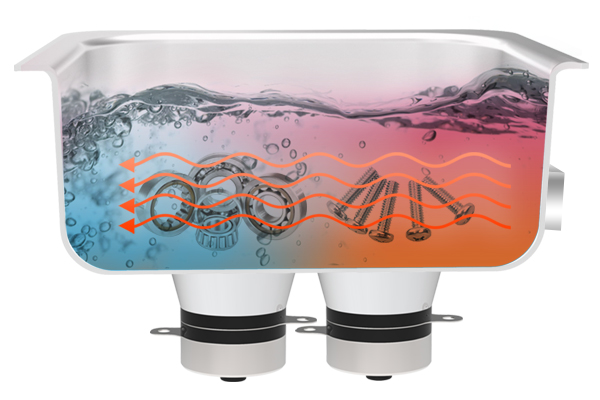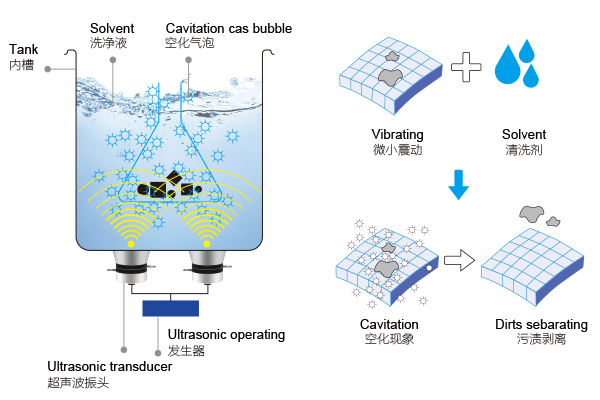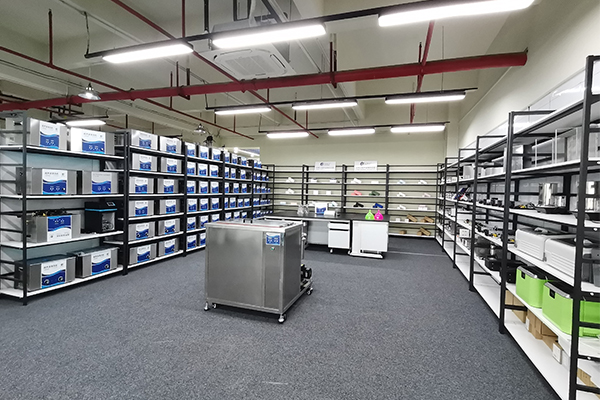Electronic components play a core role in modern technological devices, and their cleanliness directly affects the performance and stability of the equipment. Ultrasonic cleaning, with its efficiency and safety, has become an important method for cleaning electronic components. So, which electronic components can be cleaned with ultrasonic cleaners?

1. Electronic Components Suitable for Ultrasonic Cleaning
1.1 Printed Circuit Boards (PCBs)
During manufacturing and maintenance, PCBs often accumulate flux residues, solder particles, and grease, which can lead to circuit failures. Ultrasonic cleaning can penetrate the tiny gaps between PCB circuits, effectively removing these contaminants without damaging the components’ surface.
1.2 Connectors and Terminals
Cleaning connectors and terminals is crucial, especially as prolonged use can result in poor contact. Ultrasonic cleaning uses cavitation to remove dust and grease from the gaps in connectors, restoring excellent conductivity.
1.3 Passive Components (Capacitors, Resistors, etc.)
Passive components often require cleaning during production and maintenance. Ultrasonic cleaning can remove dust, fingerprints, and trace impurities from these components’ surfaces, ensuring stable performance after installation.
1.4 Semiconductor Components
Semiconductor components, such as transistors and diodes, may accumulate chemical residues or particles during production. Ultrasonic cleaning, with precise control, can clean fine impurities from the surfaces and internal packaging of these components.
1.5 Optical and Precision Electronic Components
Optical modules, such as camera lenses and fiber optic connectors, demand high cleanliness. Ultrasonic cleaning can effectively remove fingerprints, grease, and dust from optical surfaces without affecting their optical performance.
2. Advantages of Ultrasonic Cleaning
2.1 Deep Cleaning of Complex Structures
Electronic components are often intricately designed, making them difficult to clean using traditional methods. Ultrasonic cleaning’s cavitation effect reaches gaps, blind holes, and other areas inaccessible to conventional techniques, ensuring thorough cleaning.
2.2 Efficient and Safe
Ultrasonic cleaning can process multiple components simultaneously, significantly reducing cleaning time while avoiding physical damage and inefficiency associated with manual cleaning.
2.3 Non-Damaging Cleaning for Precision Components
For sensitive electronic components, ultrasonic cleaning allows precise control of frequency and power, achieving effective cleaning without compromising structural integrity or functionality.
2.4 Environmentally Friendly Cleaning
Ultrasonic cleaning, combined with eco-friendly cleaning solutions, not only minimizes environmental impact but also protects electronic components from chemical corrosion.
3. Precautions When Using Ultrasonic Cleaning for Electronic Components
3.1 Choosing the Right Cleaning Solution
Select an appropriate cleaning solution based on the material of the components. For instance, avoid solutions that could oxidize metals or damage plastics to ensure the components’ performance and appearance remain intact.
3.2 Temperature and Frequency Control
When cleaning electronic components, maintain a cleaning temperature between 40-60°C and select an appropriate ultrasonic frequency (25kHz-40kHz) based on the components’ characteristics to prevent damage.
3.3 Drying After Cleaning
Electronic components should be dried promptly after cleaning. Using vacuum drying or hot air drying equipment is recommended to prevent short circuits or corrosion caused by residual moisture.
3.4 Protection for Special Components
Optical components or high-precision electronic parts may require additional protective measures before cleaning, such as applying protective films or using low-power cleaning modes.
Ultrasonic cleaning has become an essential method for cleaning electronic components due to its efficiency, environmental friendliness, and safety. From PCBs and connectors to semiconductors and optical components, ultrasonic cleaning technology provides an effective and reliable solution for maintaining the cleanliness and performance of electronic components.




